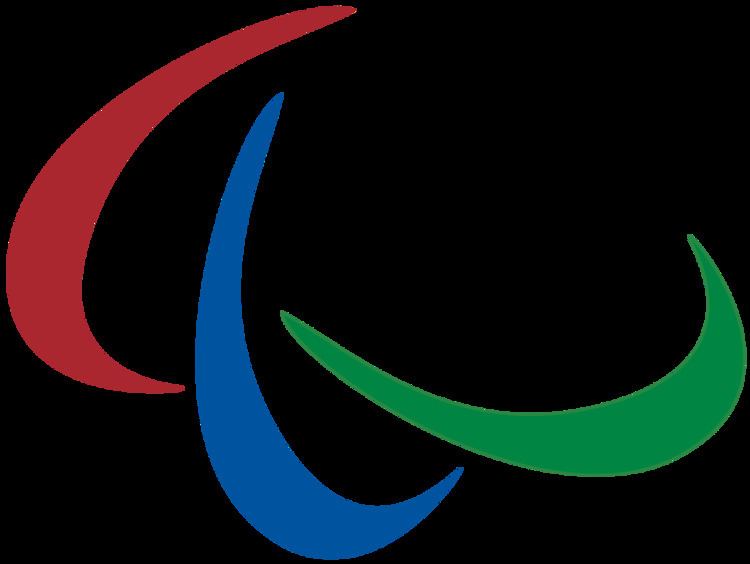 | ||
The Paralympic sports comprise all the sports contested in the Summer and Winter Paralympic Games. As of 2016, the Summer Paralympics was included 22 sports and 526 medal events, and the Winter Paralympics include 5 sports and disciplines and about 72 events. The number and kinds of events may change from one Paralympic Games to another.
Contents
- History
- Organization
- Disability categories
- Classification
- Current summer sports
- Possible future winter sports
- Abbreviations
- References
The Paralympic Games are a major international multi-sport event for athletes with physical disabilities. This includes athletes with mobility disabilities, amputations, blindness, and cerebral palsy. Paralympic sports refers to organized competitive sporting activities as part of the global Paralympic movement. These sports are organized and run under the supervision of the International Paralympic Committee and other international sports federations.
History
Organized sport for persons with physical disabilities developed out of rehabilitation programs. Following World War II, in response to the needs of large numbers of injured ex-service members and civilians, sport was introduced as a key part of rehabilitation. Sport for rehabilitation grew into recreational sport and then into competitive sport. The pioneer of this approach was Ludwig Guttmann of the Stoke Mandeville Hospital in England. In 1948, while the Olympic Games were being held in London, England, he organized a sports competition for wheelchair athletes at Stoke Mandeville. This was the origin of the Stoke Mandeville Games, which evolved into the modern Paralympic Games.
Organization
Globally, the International Paralympic Committee is recognized as the leading organization, with direct governance of nine sports, and responsibility over the Paralympic Games and other multi-sport, multi-disability events. Other international organizations, notably the International Wheelchair and Amputee Sports Federation (IWAS), the International Blind Sports Federation (IBSA), International Sports Federation for Persons with Intellectual Disability (INAS) and the Cerebral Palsy International Sports and Recreation Association (CP-ISRA) govern some sports that are specific to certain disability groups. In addition, certain single-sport federations govern sports for athletes with a disability, either as part of an able-bodied sports federation such as the International Federation for Equestrian Sports (FEI), or as a disabled sports federation such as the International Wheelchair Basketball Federation.
At the national level, there are a wide range of organizations that take responsibility for Paralympic sport, including National Paralympic Committees, which are members of the IPC, and many others.
Disability categories
Athletes who participate in Paralympic sport are grouped into ten major categories, based on their type of disability:
Physical Impairment - There are eight different types of physical impairment recognized by the movement:
Visual Impairment - Athletes with visual impairment ranging from partial vision, sufficient to be judged legally blind, to total blindness. This includes impairment of one or more component of the visual system (eye structure, receptors, optic nerve pathway, and visual cortex). The sighted guides for athletes with a visual impairment are such a close and essential part of the competition that the athlete with visual impairment and the guide are considered a team. Beginning in 2012, these guides (along with sighted goalkeepers in 5-a-side football became eligible to receive medals of their own.
Intellectual Disability - Athletes with a significant impairment in intellectual functioning and associated limitations in adaptive behaviour. The IPC primarily serves athletes with physical disabilities, but the disability group Intellectual Disability has been added to some Paralympic Games. This includes only elite athletes with intellectual disabilities diagnosed before the age of 18. However, the IOC-recognized Special Olympics World Games are open to all people with intellectual disabilities.
The disability category determines who athletes compete against and which sports they participate in. Some sports are open to multiple disability categories (e.g. cycling), while others are restricted to only one (e.g. Five-a-side football). In some sports athletes from multiple categories compete, but only within their category (e.g. athletics), while in others athletes from different categories compete against one another (e.g. swimming). Events in the Paralympics are commonly labelled with the relevant disability category, such as Men's Swimming Freestyle S1, indicating athletes with a severe physical impairment, or Ladies Table Tennis 11, indicating athletes with an intellectual disability.
Classification
A major component of Paralympic sport is classification. Classification provides a structure for competition which allows athletes to compete against others with similar disabilities or similar levels of physical function. It is similar in aim to the weight classes or age categories used in some non-disabled sports.
Athletes are classified through a variety of processes that depend on their disability group and the sport they are participating in. Evaluation may include a physical or medical examination, a technical evaluation of how the athlete performs certain sport-related physical functions, and observation in and out of competition. Each sport has its own specific classification system which forms part of the rules of the sport.
Current summer sports
The following table lists the currently practiced Paralympic sports,
Possible future winter sports
Bob Balk, the chairman of the International Paralympic Committee (IPC) Athletes' Council, launched a campaign in early 2012 to have sliding sports (bobsleigh, luge and skeleton) included at the 2018 Winter Paralympics in Pyeongchang, South Korea.
